Why tools always broken at the same spot
In difficult-to-machine materials, the tool is very prone to wear-groove wear
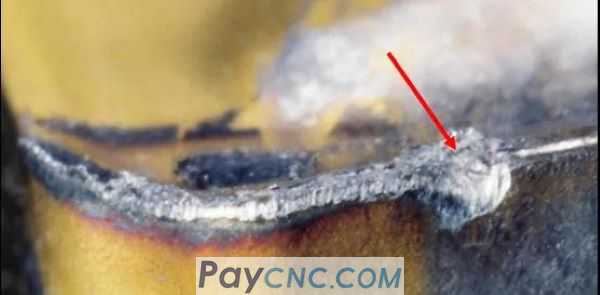
Look at the picture above, this is the blade viewed under a magnifying glass
Other places are fine, but one position has worn out, and this position is always like a groove. This is the so-called groove wear.
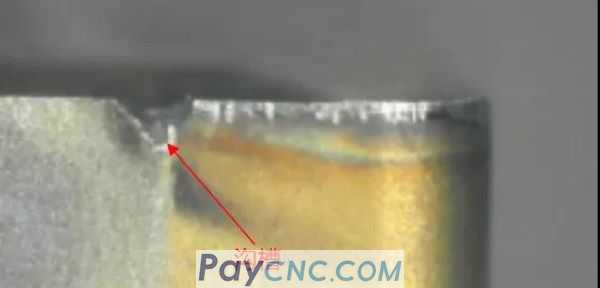
What is going on here?
In fact, the reason is very simple, that is work hardening.
During processing, cutting heat is generated, and the temperature of this heat is quite high
At high temperatures, the workpiece will undergo a heat treatment on the workpiece material in the processing area
Especially when the coolant is insufficient, the final result is that the surface of the workpiece becomes hard. This hardening phenomenon is called work hardening.
With this hardened layer, the workpiece will have two hardnesses, hard on the surface and soft on the inside.
What happens when there are two hardness machinings?
There will be the situation mentioned above, the CNC knife is always chipped (or worn) at the same position
Because one position of the blade is always used to process the hard skin, then this place will be broken first.
What kind of materials are prone to this phenomenon?
Hardened materials, such as materials with surface hard skin and oxide skin.
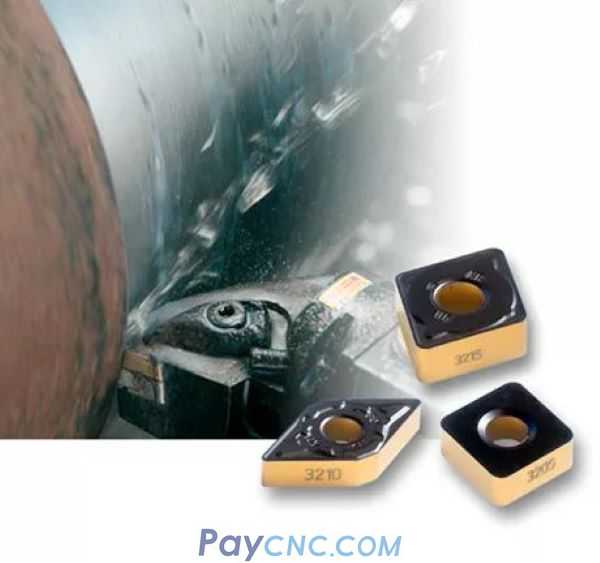
There is another situation on the contrary, the more viscous material is also prone to work hardening.
Such as stainless steel, heat-resistant alloys and other materials
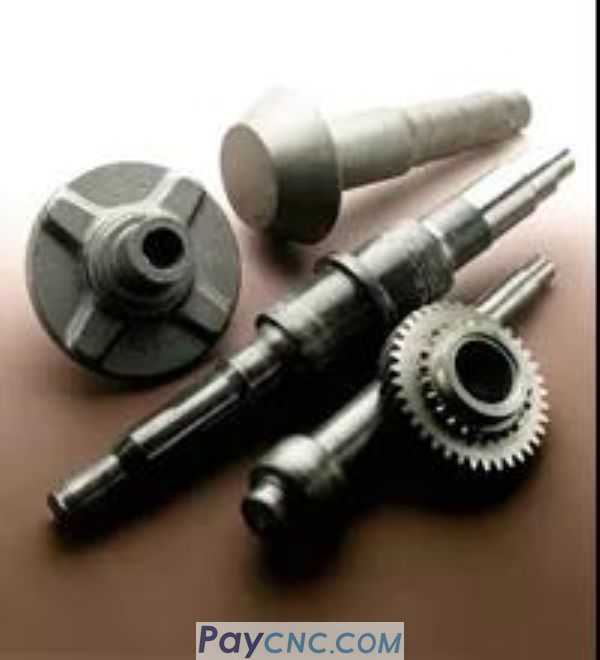
If the machining allowance is large and you do not consider work hardening, the blade life will not be good.
So how to solve this problem?
The method is very simple, don't always let the blade come into contact with the hardened skin of the workpiece.
When processing, try to divide it into several layers of different depths to process. The contact position of the blade and the hardened layer is not one, but a line, so that the tool life can be improved.
For example, if you want to process 12mm deep, you can process 5mm for the first layer, 4mm for the second layer, and 3mm for the third layer, so that the 4mm position of the blade will not be processed hardened!
What if it can only be divided into one layer?
Then see if you can write a slope tool path program
It is to make a bit shallower at the beginning, gradually deepen, and then the second cut starts to become deeper and then gradually becomes shallower. If it can't be processed like this! Then change the tool
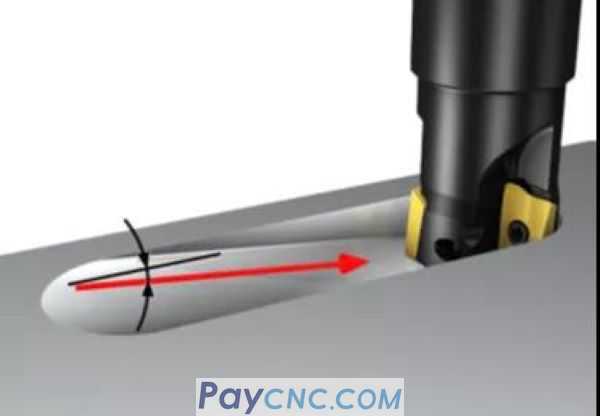
The slope tool path is especially suitable for CNC lathes. It ensures that any damage to the blade can spread along the cutting edge. Since the depth of cut is variable, this is a very ideal solution.
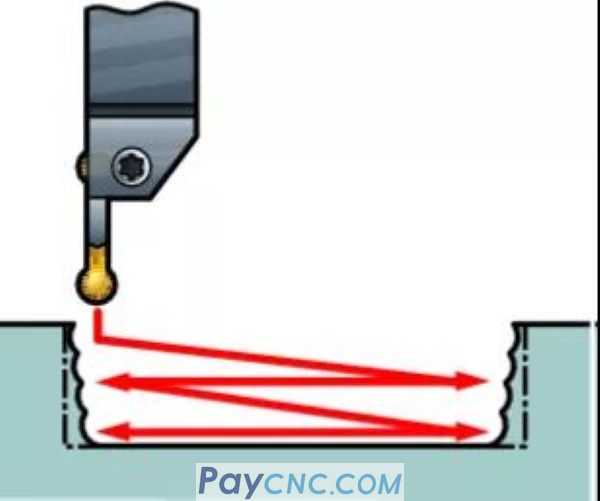
Multiple passes with varying depth of cut can be used as an alternative.
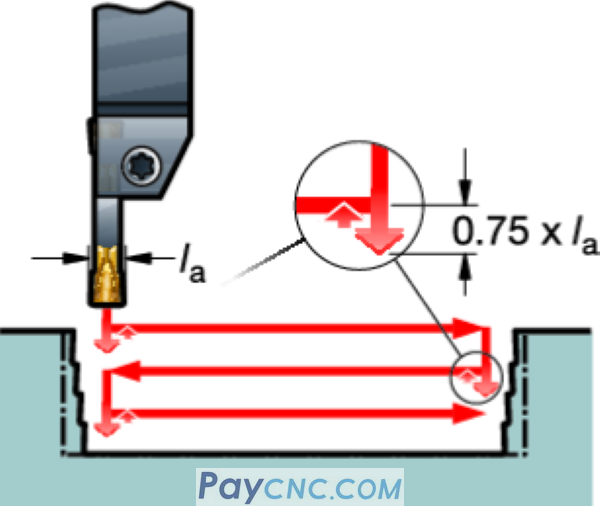
There is one more thing I want to talk about. That is, the depth of cut should not be too shallow when there is work hardening,
If it is too shallow, the tool may have been working on the hardened layer. This is not a problem, but a problem everywhere. So when there is work hardening, it’s not that the shallower the work, the better

Look at the picture above, this is the blade viewed under a magnifying glass
Other places are fine, but one position has worn out, and this position is always like a groove. This is the so-called groove wear.

What is going on here?
In fact, the reason is very simple, that is work hardening.
During processing, cutting heat is generated, and the temperature of this heat is quite high
At high temperatures, the workpiece will undergo a heat treatment on the workpiece material in the processing area
Especially when the coolant is insufficient, the final result is that the surface of the workpiece becomes hard. This hardening phenomenon is called work hardening.
With this hardened layer, the workpiece will have two hardnesses, hard on the surface and soft on the inside.
What happens when there are two hardness machinings?
There will be the situation mentioned above, the CNC knife is always chipped (or worn) at the same position
Because one position of the blade is always used to process the hard skin, then this place will be broken first.
What kind of materials are prone to this phenomenon?
Hardened materials, such as materials with surface hard skin and oxide skin.

There is another situation on the contrary, the more viscous material is also prone to work hardening.
Such as stainless steel, heat-resistant alloys and other materials

If the machining allowance is large and you do not consider work hardening, the blade life will not be good.
So how to solve this problem?
The method is very simple, don't always let the blade come into contact with the hardened skin of the workpiece.
When processing, try to divide it into several layers of different depths to process. The contact position of the blade and the hardened layer is not one, but a line, so that the tool life can be improved.
For example, if you want to process 12mm deep, you can process 5mm for the first layer, 4mm for the second layer, and 3mm for the third layer, so that the 4mm position of the blade will not be processed hardened!
What if it can only be divided into one layer?
Then see if you can write a slope tool path program
It is to make a bit shallower at the beginning, gradually deepen, and then the second cut starts to become deeper and then gradually becomes shallower. If it can't be processed like this! Then change the tool

The slope tool path is especially suitable for CNC lathes. It ensures that any damage to the blade can spread along the cutting edge. Since the depth of cut is variable, this is a very ideal solution.

Multiple passes with varying depth of cut can be used as an alternative.

There is one more thing I want to talk about. That is, the depth of cut should not be too shallow when there is work hardening,
If it is too shallow, the tool may have been working on the hardened layer. This is not a problem, but a problem everywhere. So when there is work hardening, it’s not that the shallower the work, the better
 USD
USD




